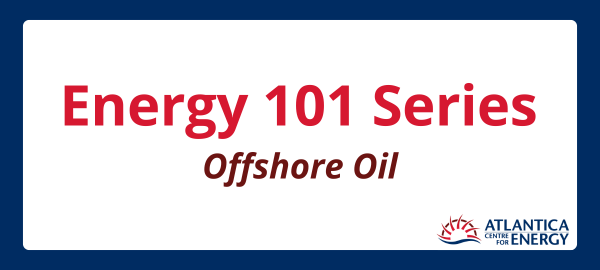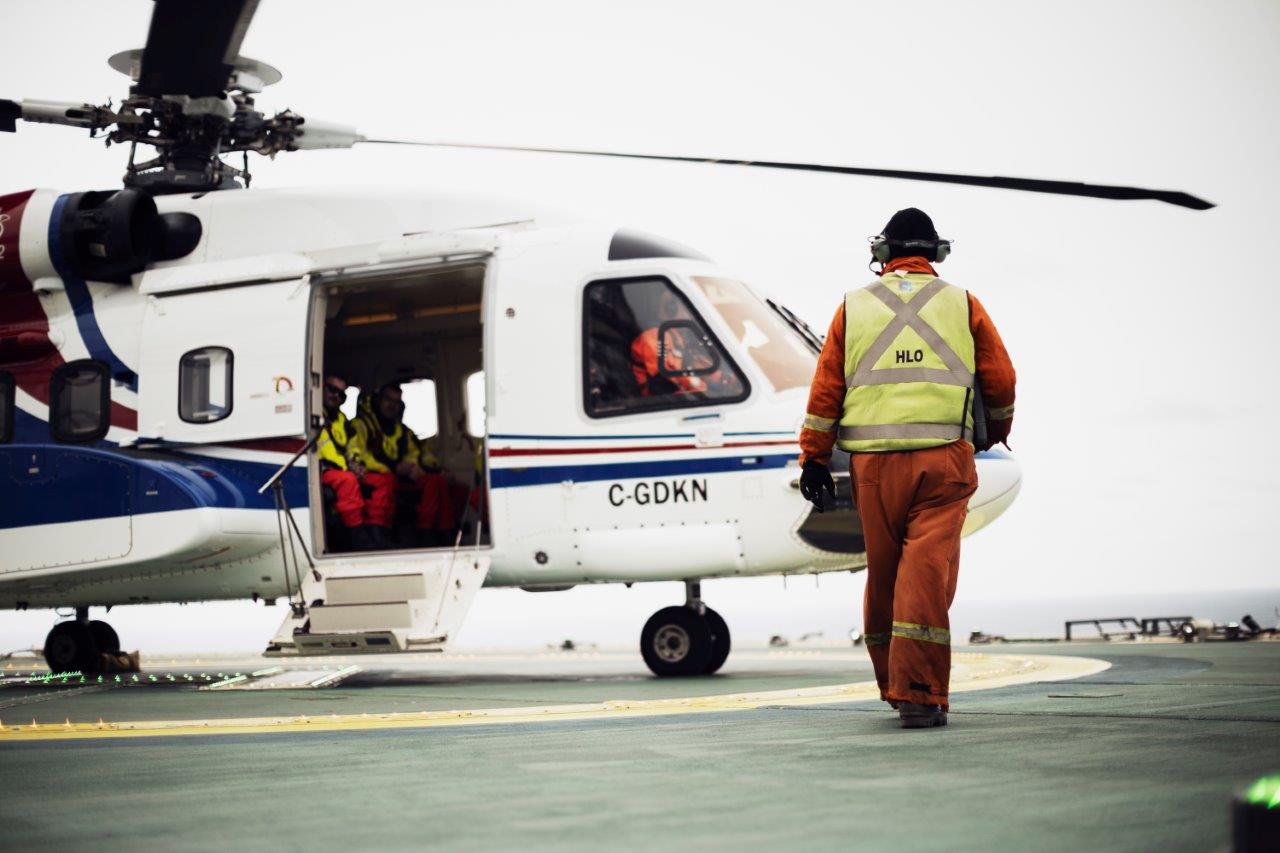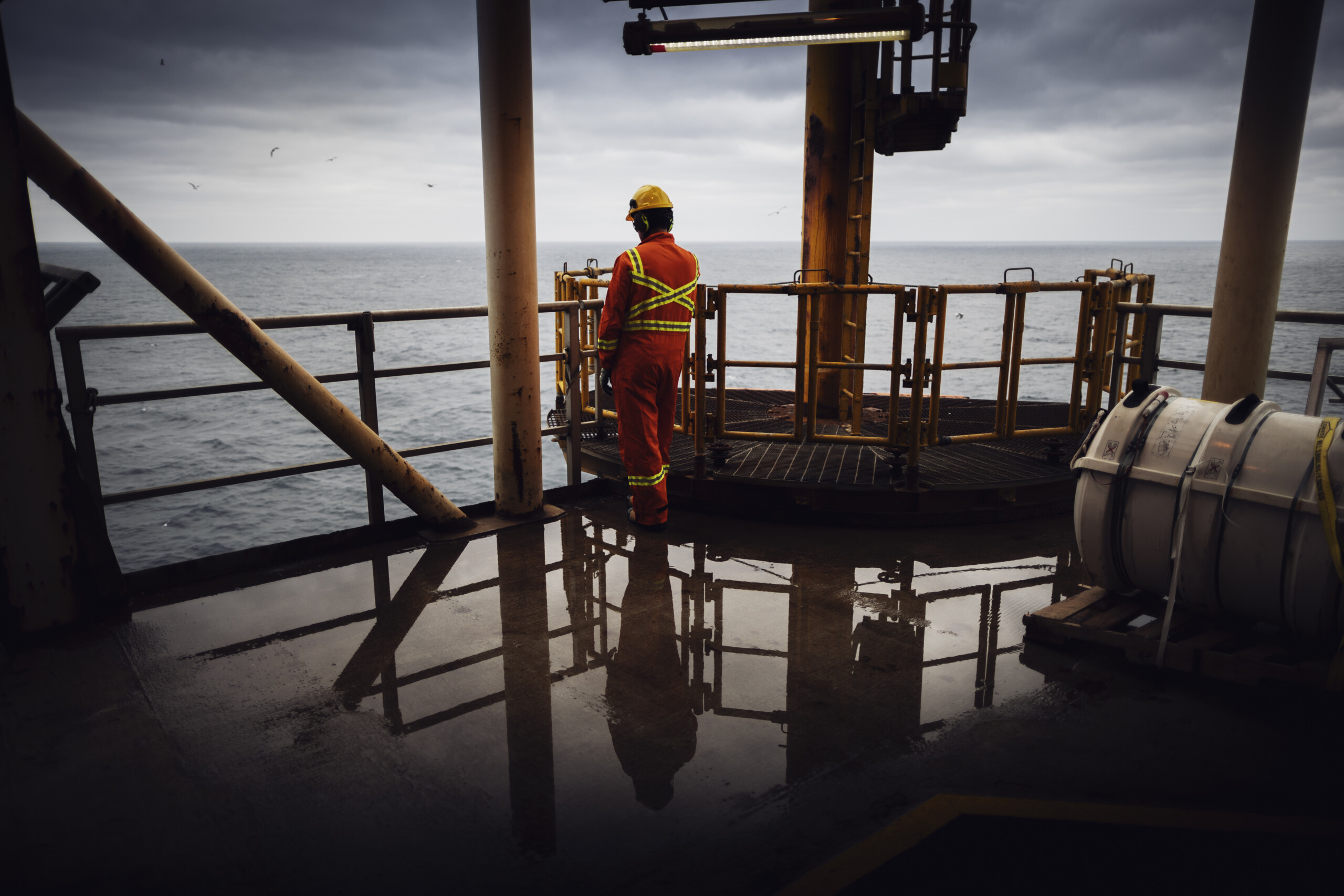When people in Atlantic Canada hear about offshore oil production, they might think of rigs far out at sea or news stories about increasing government revenues. What’s less understood is how offshore oil is actually developed, what happens to it once it comes ashore, and the role it could play in shaping the region’s energy future as one of Atlantic Canada’s biggest economic drivers.
What is offshore oil?
Offshore oil is found in sedimentary basins beneath the seabed and trapped below rock layers that are otherwise impermeable (seal rocks such as shales). Organic-rich rocks accumulate the remains of marine organisms, which turned into crude oil over millions of years under intense heat and pressure.
Offshore oil is trapped in porous sandstone (full of tiny holes), which are called reservoir rocks and are trapped by faults, which lie roughly two to four kilometres beneath the ocean floor. Tilted layers or salt structures help stop the oil from moving and concentrate it.
Where is offshore oil currently extracted in Atlantic Canada?
In Atlantic Canada, there are several places where offshore oil can be found, including the Jeanne d’Arc Basin, roughly 300 km west of St. John’s. This basin is home to all the region’s producing offshore oil wells today. The Flemish Pass Basin, just east of the Jeanne d’Arc Basin, also has proven discoveries and could see future production.
Confirmed recoverable reserve estimates for Newfoundland and Labrador’s offshore (in the Grand Banks) are estimated to be 1.2 billion barrels today, with another 1.8 billion barrels contingent.
In Nova Scotia, research indicates that significant oil reserves exist in the Scotian Basin (south of Cape Breton); however, no further exploration is currently underway to determine the potential to develop these resources.
Research commissioned by the provincial governments estimated that Newfoundland and Labrador’s oil reserves are an estimated 123.5 billion barrels and 22.6 billion barrels in Nova Scotia. There are significant natural gas resources in both provinces as well. However, the extent to which these reserves are recoverable or economical remains uncertain.
How is offshore oil extracted in Atlantic Canada?

Wells are drilled through the ocean floor and lined with steel casings, then connected to a platform. In Newfoundland and Labrador’s offshore, there are two types of platforms used today; fixed gravity-based structure platforms (GBS) and Floating, Production, Storage and Off-Loading vessels (FPSOs). GBS platforms stand on the ocean floor and rise to the surface. FPSO platforms are ships and have flexibility to disconnect in bad weather or for refurbishments. Currently, there are two GBS platforms and two FPSOs operating in Newfoundland and Labrador’s offshore.
Oil is pumped to the platforms via a riser pipe, using natural pressure or injected with natural gas or water to maintain pressure. The oil recovered is separated from natural gas and water on the platforms, stored in tanks, and then offloaded onto tankers to head to global markets. The natural gas separated can be injected back into wells or can be refined to help power operations on the platform.
Which projects currently produce oil in Newfoundland and Labrador’s offshore?
Combined offshore production for Newfoundland and Labrador averaged roughly 209 million barrels per day in 2024, which was down from a peak of 368 million barrels per day in 2007.
Current production platforms:
- Hibernia: First project in Newfoundland and Labrador’s offshore and started producing in 1997 in the Jeanne d’Arc Basin. It is the largest producer and has the most confirmed reserves in the region. It uses a fixed platform (GBS) in relatively shallow water.
- Hebron: The project began operating in 2017 and also uses a GBS platform and is anchored to deeper water than the Hibernia platform. This project has the second-highest confirmed reserves of established projects.
- White Rose: Uses an FPSO platform (Sea Rose) and started production in 2005. Sea Rose was recently refurbished. The project has an estimated 440 million barrels recoverable.
- Terra Nova: Uses an FPSO platform and began production in 2002. The platform was recently refurbished.
Projects under construction:
- West White Rose: This production site is under construction and is expected to produce oil beginning in 2026. This site will use a fixed wellhead platform (recently mated offshore with its topsides) and be tied back to the SeaRose FPSO.
Projects in development:
- Bay du Nord: This project would take place roughly 500 kms east of St. John’s in the Flemish Pass Basin. The project received environmental assessment approval by the federal government in 2022, but the project was put on hold in 2023. Equinor, the project operator, has been working to optimize the project and advance it towards a final investment decision by 2027.
What is the role of offshore oil development in Atlantic Canada’s net-zero future?
Offshore oil production is an important economic driver for Newfoundland and Labrador, representing $7.5 billion (55%) of the province’s total exports in 2024. The majority of this oil is now shipped to Europe. The sector produced an estimated 15,834 jobs (direct, indirect and induced) in the region, and the Government of Newfoundland and Labrador estimated $1.59 billion in royalties from the oil and gas sector in its 2025 Budget. This represents 15 per cent of the province’s revenues.
It is also important to recognize that the emission intensity of offshore oil production in Atlantic Canada is 30% below the global average for emissions at extraction.
With these considerations in mind, the Government of Newfoundland and Labrador plans to continue supporting safe, responsible oil development in its offshore. Similarly, a Call for Bids was opened in July 2025 for exploratory licenses in Nova Scotia’s offshore.
During the energy transition, Canada and the rest of the world will continue using oil and the refined products that come from it.
Additional resources:
- C-NLOER, Information and Reports
- OilCo, Exploration
- C-NSOER, Current Activity
- Government of Newfoundland and Labrador, Offshore Projects
- Government of Newfoundland and Labrador, Offshore Maps and Data
- Government of Newfoundland and Labrador, 2025 Budget
- Government of Nova Scotia, Oil and Gas, Offshore
- CAPP, Offshore Oil
- CAPP, Canada’s Offshore Oil & Gas Industry (July 2025)
- EnergyNL
- How Stuff Works, How Offshore Drilling Works
- Government of Canada, Roadmap for the Decarbonization of Canada’s Oil and Gas Sector



